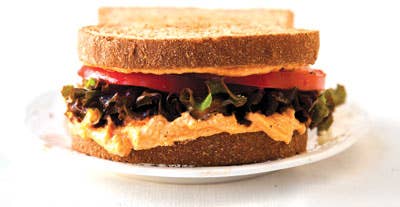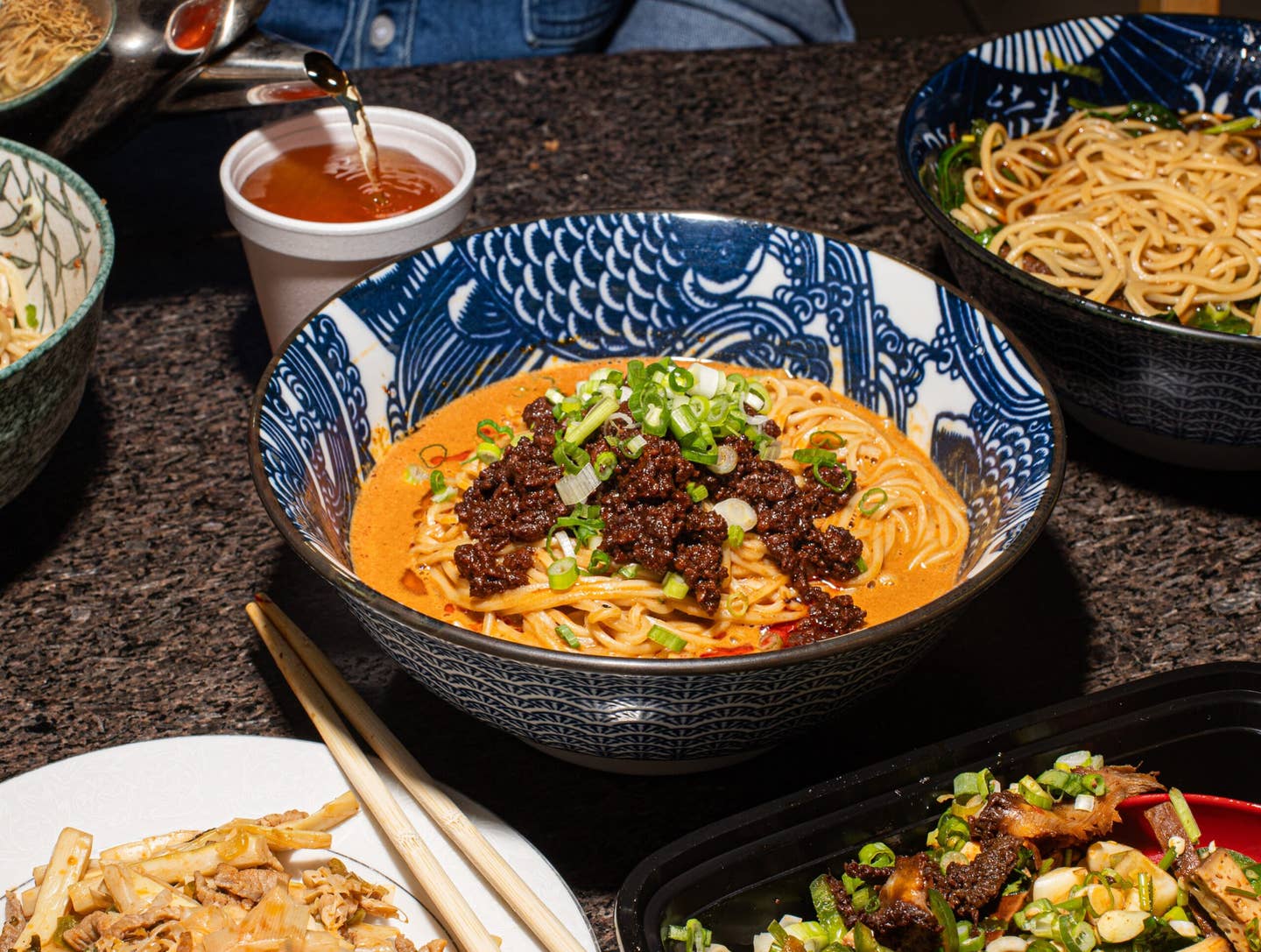
The first thing I made in my first real kitchen—in an apartment in Raleigh, North Carolina—was a pimento cheese sandwich. It was a natural choice for a college sophomore: I loved the stuff, and it was easy to make. True, many Southerners buy their P.C., as it is often called, at the market, but I learned to make it from my mother, who whipped up the orange spread in her food processor, blending extra-sharp cheddar, Winn-Dixie-brand mayo, pimientos, Tabasco, and onion. I'd eat it every day on a sandwich. It's a food Southerners always have on hand, as suited to lunch boxes as it is to dinner parties. I have memories of swank soirees where there were towers of pimento cheese on triangles of crustless white bread.
Since 1909, when pimento cheese sandwiches appeared in The Up-to-Date Sandwich Book, countless variations have been cataloged. Most start with block cheese (white or orange, the sharper the better), mayonnaise (purists insist on Duke's brand or homemade), and pimientos. A look through any Junior League cookbook will turn up extras like cream cheese, chopped eggs, olives, Worcestershire, lemon juice, garlic, and sugar. My grandmother in Lafayette, Louisiana, adds jala-peños, and I've used roasted and pickled red peppers. The texture also varies: You can grate the cheese, use a food processor, or go with a meat grinder, which produces a soft, fluffy spread.
All of them taste good to me. When I moved to Brooklyn, New York, years ago, P.C. was virtually unknown, but now the spread is in vogue. I've seen pimento cheese in restaurants—pureed, deconstructed, and deep-fried into fritters. But I maintain that the best way to eat it is on a sandwich. —Rachel Wharton, deputy editor of Edible Brooklyn and Edible Manhattan
Keep Reading
Continue to Next Story










